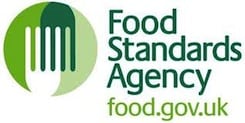 From the Food Standards Agency to Stakeholders: As you may be aware from 1 January 2013, Reg EC No 1099/2009 came into effect in all EU Member States. This introduces a number of changes to welfare requirements for the slaughterhouse, moving the emphasis for monitoring and improving welfare to the Food Business Operator. There are also a range of new definitions in the Regulation and we have become aware of some concerns relating to interpretation of the new Regulation and what the Regulation actually means. On that basis the FSA is writing to clarify the actual position with regards to the new definitions of key aspects of the slaughter process under the new Regulation. The Regulation introduces new definitions for the slaughter process as follows:
From the Food Standards Agency to Stakeholders: As you may be aware from 1 January 2013, Reg EC No 1099/2009 came into effect in all EU Member States. This introduces a number of changes to welfare requirements for the slaughterhouse, moving the emphasis for monitoring and improving welfare to the Food Business Operator. There are also a range of new definitions in the Regulation and we have become aware of some concerns relating to interpretation of the new Regulation and what the Regulation actually means. On that basis the FSA is writing to clarify the actual position with regards to the new definitions of key aspects of the slaughter process under the new Regulation. The Regulation introduces new definitions for the slaughter process as follows:
- “Slaughter” means killing animals intended for human consumption
- “Stunning” is any process that causes a loss of consciousness and sensibility without causing pain
- “Stunning” includes any process that results in instant death
- “Simple stunning” is any stunning process which does not result in instantaneous death
- “Simple stunning” must be followed as quickly as possible by a procedure ensuring death occurs before the animal regains consciousness
Where a simple stunning method is used the animal will, in most cases, remain alive but unconscious until something else e.g. bleeding, is done to cause the animal’s death. This is similar to the approach to the use of stunning (as opposed to killing) methods in the Welfare of Animals (Slaughter or Killing) Regulations 1995 (WASK). The FSA appreciates that the introduction of new definitions may cause some confusion, but you may wish to make people aware that the EU Regulation does enable stunning methods to be used that do not automatically cause the death of an animal.
Geoff Ogle Head of Field Operations, Operations Group, Food Standards Agency
TO DOWNLOAD THE FULL ‘UPDATE ON ANIMAL WELFARE REGULATIONS’ , PLEASE CLICK HERE.



